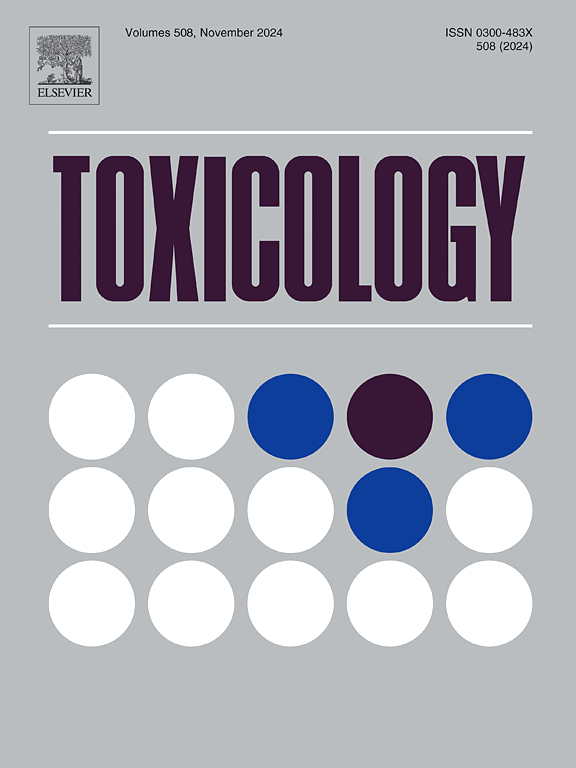Cadmium-mediated autophagy increases ferroptosis of ovarian granulosa cells
IF 4.6
3区 医学
Q1 PHARMACOLOGY & PHARMACY
引用次数: 0
Abstract
Cadmium (Cd) is a pervasive environmental toxicant that poses significant threats to female reproductive health. Accumulating evidence has linked Cd exposure to ovarian dysfunction and infertility. As critical somatic components of ovarian follicles, granulosa cells (GCs) regulate folliculogenesis and oocyte maturation, and their dysfunction is implicated in various reproductive disorders including premature ovarian insufficiency (POI) and polycystic ovary syndrome (PCOS). However, the precise mechanisms underlying Cd-induced GC injury are not yet fully understood. Here, we demonstrate that Cd exposure triggers GC death via ferroptosis, an iron-dependent form of regulated cell death characterized by uncontrolled lipid peroxidation. Mechanistically, Cd induces mitochondrial dysfunction and glutathione peroxidase 4 (GPX4) downregulation, leading to reactive oxygen species (ROS) accumulation and subsequent oxidative damage. Intriguingly, we identified autophagy activation as a key regulator of Cd-triggered ferroptosis, evidenced by increased LC3-II conversion and autophagic flux. Importantly, the protective effect of chloroquine (Cq) against Cd-induced cell death provides compelling evidence for the essential role of autophagic activation in mediating Cd-triggered ferroptosis. Our findings not only elucidate a novel molecular pathway connecting Cd exposure to female infertility but also provide preclinical evidence for targeting the autophagy-ferroptosis axis in reproductive toxicology.
镉介导的自噬增加卵巢颗粒细胞的铁下垂
镉(Cd)是一种普遍存在的环境毒物,对女性生殖健康构成重大威胁。越来越多的证据表明,接触镉与卵巢功能障碍和不孕症有关。颗粒细胞(GCs)作为卵巢卵泡的关键体细胞成分,调节卵泡发生和卵母细胞成熟,其功能障碍涉及多种生殖疾病,包括卵巢早衰(POI)和多囊卵巢综合征(PCOS)。然而,cd诱导的GC损伤的确切机制尚不完全清楚。在这里,我们证明了Cd暴露通过铁死亡触发GC死亡,铁死亡是一种铁依赖性的调节细胞死亡形式,其特征是不受控制的脂质过氧化。机制上,Cd诱导线粒体功能障碍和谷胱甘肽过氧化物酶4 (GPX4)下调,导致活性氧(ROS)积累和随后的氧化损伤。有趣的是,我们发现自噬激活是cd触发的铁凋亡的关键调节因子,LC3-II转换和自噬通量的增加证明了这一点。重要的是,氯喹(Cq)对cd诱导的细胞死亡的保护作用为自噬激活在介导cd触发的铁凋亡中的重要作用提供了令人信服的证据。我们的研究结果不仅阐明了镉暴露与女性不育之间的一个新的分子途径,而且为生殖毒理学中针对自噬-铁下垂轴提供了临床前证据。
本文章由计算机程序翻译,如有差异,请以英文原文为准。
求助全文
约1分钟内获得全文
求助全文
来源期刊

Toxicology
医学-毒理学
CiteScore
7.80
自引率
4.40%
发文量
222
审稿时长
23 days
期刊介绍:
Toxicology is an international, peer-reviewed journal that publishes only the highest quality original scientific research and critical reviews describing hypothesis-based investigations into mechanisms of toxicity associated with exposures to xenobiotic chemicals, particularly as it relates to human health. In this respect "mechanisms" is defined on both the macro (e.g. physiological, biological, kinetic, species, sex, etc.) and molecular (genomic, transcriptomic, metabolic, etc.) scale. Emphasis is placed on findings that identify novel hazards and that can be extrapolated to exposures and mechanisms that are relevant to estimating human risk. Toxicology also publishes brief communications, personal commentaries and opinion articles, as well as concise expert reviews on contemporary topics. All research and review articles published in Toxicology are subject to rigorous peer review. Authors are asked to contact the Editor-in-Chief prior to submitting review articles or commentaries for consideration for publication in Toxicology.
 求助内容:
求助内容: 应助结果提醒方式:
应助结果提醒方式:


